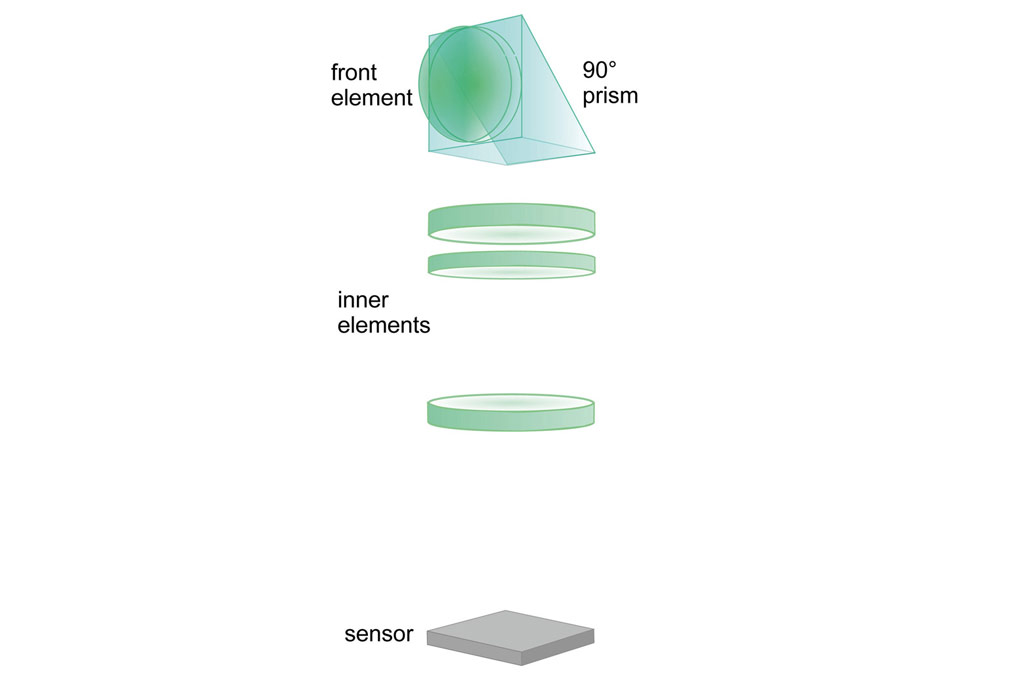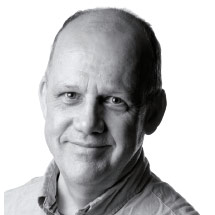In my previous article, I discussed the impact of designing glass elements into phone camera lenses. Here I’ll look at another phone lens conundrum, that of smartphone ‘telephoto’ lenses.
Again, we start with the absolute limit on a lens’s resolution capability, which is the diffraction limit provided by the 5mm entrance pupil (aperture) diameter, that’s dictated by the slimness requirements of a phone. The angular resolution limit of 0.008° is calculated from that entrance pupil and the wavelength of the visible light.
In practice, the smallest total angle of view from such a lens is about 10° if we want to produce 1K pixel image, regardless of sensor size. This corresponds to a ‘full-frame’ focal length of 200mm, which is usefully ‘long’, but not ever going to pull in distant subjects. This limitation is given entirely by the aperture size of the lens.
So, let’s now look at two different design solutions to providing ‘200mm equivalent’ capability in a mobile phone. The first is simply to use a very small image sensor behind the lens. Pixel sizes of around 1.3 microns can produce very good results with modern technology, and a 1K sensor so equipped would end up at about 1.3mm across, which in sensor size terminology is ‘type 1/10’. The focal length needed to produce a 10° angle-of-view on such a sensor is 7.4mm, which could be fitted within the space limits available. Incidentally, this lens would have an f-number of 1.5, which is quite feasible for a well-corrected lens.
Solution two is to use a ‘periscope’ lens, in which a mirror or prism behind the front element(s) of the lens turns the rest of the lens through 90° so that it lies sideways within the phone. Notice that it does not allow for a larger entrance pupil, since its size is limited by the prism/mirror, which in turn is dictated by the slimness requirement. But the periscope design does allow a longer lens structure, so a larger sensor might be specified. Suppose a ‘type 1/2.4’ sensor, 6mm across, is to be used. To give 10° angle of view a focal length of 34mm is required, which can be packed into the periscope tube. The lens will have an f-number of 6.8.

A periscope design allows a longer lens within a slimness constraint. But there are other ways of providing a narrow angle of view, which may prove to be a better overall solution.
In optical terms, neither solution is better than the other. Both collect the same amount of light from the same angle of view, and use the same angular sampling rate. Which is better comes down to practical concerns. The small sensor may have a problem with the limited saturation capacities of its small pixels limiting the use of extended exposure times. But that might be mitigated by compositing multiple exposures. Without going through a design cycle and evaluating the results, any determination as to which would give better results would be purely speculative.
It is however likely that the small camera would be cheaper to manufacture and easier to integrate into the phone, which is possibly why periscope-style phone lenses do not seem to have caught on.
Especially considering that there is a solution that outperforms them both.
The available entrance pupil of the lens, and the resulting angular resolution, determined the pixel size of the small sensor. The sensor size was limited by the 10° angle of view. Putting the small pixels on a sensor large enough to give a ‘normal’ angle of view with the lens would provide a more flexible solution allowing both ‘telephoto’ and ‘normal’ options. Of course, such a sensor would pack in a lot of pixels, maybe 48 million of them – but that’s not uncommon these days and the marketing people might see it as an advantage.
There is another lesson from this whole discussion. If you want to capture distant subjects in high detail, then the lens needs a large entrance pupil, the larger the better. This is why big sports arenas tend to be encircled by photographers using lenses with 150mm entrance pupils.
 Bob Newman is currently Professor of Computer Science at the University of Wolverhampton. He has been working with the design and development of high-technology equipment for 35 years and two of his products have won innovation awards. Bob is also a camera nut and a keen amateur photographer.
Bob Newman is currently Professor of Computer Science at the University of Wolverhampton. He has been working with the design and development of high-technology equipment for 35 years and two of his products have won innovation awards. Bob is also a camera nut and a keen amateur photographer.
Related reading
- Which is better: glass or plastic smartphone lenses?
- What is pixel binning, smartphone sensor technology explained
- Are smaller pixels worse? Sensor technology myths explained
- In praise of Bryce Bayer and the supreme Bayer Sensor
Follow AP on Facebook, Twitter, Instagram, YouTube and TikTok.







